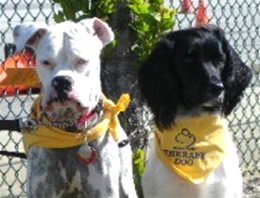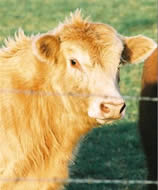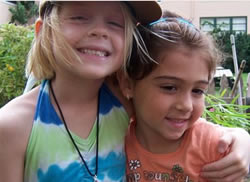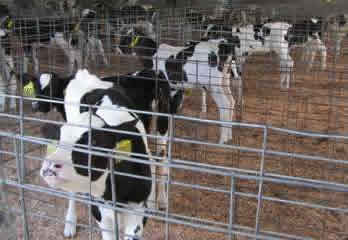
It's what we do.
tips
| |
| News |
| Frugal or Free |
| This Month's Topic |
| Food |
| Pet Pages |
| Columns |
| LifeTools |
| Religion |
| Keeping it Together |
| Special Needs |
| TV and Movie Reviews |
| Restaurant Reviews |
| Homeslice |
| Fun Activities |
| Blank |
Several hundred of the 6,000 hogs that may have eaten contaminated pet food are believed to have entered the food supply for humans, the government said Thursday. The potential risk to human health was said to be very low.
The government told the three states involved it would not allow meat from any of the hogs that ate the feed to enter the food supply.
No more than 345 hogs from farms in California, New York and South Carolina are involved, according to the Agriculture Department. It appears the large majority of the hogs that may have been exposed are still on the farms where they are being raised, spokeswoman Nicol Andrews said.
Salvaged pet food from companies known or suspected of using a tainted ingredient was shipped to hog farms in seven states for use as feed.
The government will compensate farmers if they kill those hogs, said Kenneth Peterson of department's Food Safety and Inspection Service. The department knew of no countries moving to suspend imports of U.S. pork products.
Also, a poultry feed mill in an eighth state, Missouri, also received possibly contaminated pet food scraps left over from production. The fate of the feed made from that waste was under investigation.
The pet food sent to the farms later was discovered to have an ingredient, rice protein concentrate, imported from China that was tainted by an industrial chemical, melamine. Testing also revealed other related and similarly banned compounds, including cyanuric acid. Food and Drug Administration inspectors were preparing to visit China as part of the agency's investigation.
Melamine is not considered a human health concern. But there is no scientific data on the health effects of melamine combined with the other compounds, said David Elder, director of enforcement for the FDA.
Still, the FDA and Agriculture Department believe the likelihood of someone becoming ill after eating pork from hogs fed contaminated feed is very low. Meanwhile, the University of California, Davis, is developing a test to measure melamine levels in tissue, Andrews said.
Since mid-March, pet food companies have recalled more than 100 brands of dog and cat food and treats; more recalls were announced Thursday. An unknown number of cats and dogs have fallen ill or died after eating products made with contaminated rice protein concentrate or a second tainted ingredient, wheat gluten.
Some pet food, while unsuitable for sale for that purpose, was still considered safe for animals to eat as it had not been recalled at the time it was forwarded to hog farms. Its use at hog farms raised the possibility that melamine entered the human food supply.
The department on Thursday released the following state-by-state breakdown of its investigation into farms thought to have received the contaminated pet food for use as hog feed. The farms were not identified.
_CALIFORNIA: State officials are working to contact the purchasers of 50 whole hogs raised on a single farm.
_NEW YORK: A breeder farm's 125 to 140 swine are under quarantine pending the results of urine and manure tests. None of the hogs went to slaughter.
_SOUTH CAROLINA: Urine tests done on some of the 800 hogs now quarantined at a farm have tested positive for low levels of melamine. None went to slaughter. According to the state veterinarian, none of the suspect feed was fed to the hogs. Federal tests on the feed have come up negative. The positive urine tests could not be immediately explained, although contaminated feed could have escaped detection during tests, the FDA said.
_NORTH CAROLINA: A farm with 1,400 hogs is under quarantine. It shipped 54 animals to a slaughterhouse, where they are on voluntary hold.
_UTAH: Eight hogs sent to slaughter by one farm remain on hold. Also on hold are 3,300 hogs at a second farm, as well as 40 to 50 carcasses at a slaughterhouse supplied by that producer. Meat from no more than 100 other hogs from the producer, all processed earlier by that same plant, may have entered the food supply, Andrews said.
_KANSAS: Meat from 195 hogs from a single producer may have entered the food supply via a Nebraska slaughterhouse. The farm is holding another 150 hogs.
_OKLAHOMA: A show hog operation purchased contaminated feed but no hogs have gone to slaughter.
In addition, an Ohio hog farm has been cleared.
Each year, about 105 million hogs are slaughtered and processed in the United States.
Last update: 04/27/2007
And from the folks who brought you Mad Cow disease...
You are what you eat, at least that's what my mom always said. It's a good piece of common wisdom, considering the health detriments of eating poorly, and the benefits of eating things like fiber cereal and broccoli (but not together).
Logic would dictate that this 'rule' carries over through the animal kingdom as well. Dogs who eat people food are notoriously overweight. But that's another story for another day.
What about livestock? Beef is something most people consume on a daily basis, so the bovine diet bears consideration. Research leads to some surprising information. In fact, it's so alarming that I have to first tell you I'm not making this up- there's a list of my sources at the bottom of this page, and the info I'm presenting is directly from these sources.
Livestock, mostly beef raised solely for human consumption,
is regularly feed restaurant garbage and chicken poop. OK, there I said it. Blech. When I read that I wanted to barf, because I read it straight out of a manual from the US Department of Agriculture. The manual explains that cows don't care to eat chicken poop so they have to be "coaxed".
 "Coaxed" is USDA speak for "starved." In other words, if you give a cow a choice, it will eat ANYTHING other than chicken poop (uh, yeah, me too) so you have to not give the livestock a choice.
"Coaxed" is USDA speak for "starved." In other words, if you give a cow a choice, it will eat ANYTHING other than chicken poop (uh, yeah, me too) so you have to not give the livestock a choice.
The University of Mississippi State University Extension Service, has a helpful web site which sums it up quite nicely:
"Broiler litter is not as palatable as other common feed sources, and cattle require a period of time to get adjusted to the broiler litter. To make broiler litter diets more palatable in order to increase consumption, corn or other feeds are added. Fontenot, in 1978, estimated that broiler litter as a feed is worth two to three times more than its value as a fertilizer for pastures. However, not all broiler litter currently produced is acceptable quality for use as animal feed; broiler litter unacceptable as feed should be used as fertilizer."
Cows are ruminants, which means they are strict vegetarians. They don't eat meat, they don't eat animal waste, and they don't eat dried blood mixtures; not unless a human forces them to. Their bodies aren't able to handle the requirements of digesting this material that is foreign to them without eventually paying a price.
In response to the Mad Cow disease outbreaks in Britain and other European countries, the United States and Canada in 1997 made it illegal to feed cows meat and bone meal made from ruminants. The feed bans in both countries do allow use of that feed for poultry and pigs.
But the larger concern since the inception of that ban has been that there were too many loopholes, too many ways for material that can transmit mad cow to get to cows and then possibly to humans.
The crisis "calls for some pretty drastic measures if we're going to try to ensure the safety of the beef industry," says Larry Hollis, an extension veterinarian at Kansas State University. To him, and to many in the industry, a total ban keeping all mammal by-products out of animal feed might be the only way to protect consumers. "Some people are so hung up on low-cost production that they will violate whatever rules are there," Hollis says. "Unless we keep it out of the feed stream for any purpose, we could have trouble."
Says John Stauber, author of Mad Cow USA: Could the Nightmare Happen Here?: "What we need to do is obvious but economically painful for the livestock industry. That's to implement exactly the same regulations that exist in Britain and Europe and ban all feeding of slaughterhouse waste to livestock."
New York University nutrition professor Marion Nestle, author of Safe Food: Bacteria, Biotechnology and Bioterrorism, says: "There are lots of reasons why cannibalism isn't a good idea. This is a real wake-up call about the way we've been feeding animals."
Sources:
Manure and Odor Education and Research (University of Minnesota) HTML
Manure Management topics - MN/WI Engineering Notes (University of Minnesota) HTML
Poultry-Litter-based Agroecosystem Extension and Demonstration Program (Mississippi State University) PDF / HTML
West Virginia Poultry Production Survey: A Report on Implementation of Water Quality Improvement Practices in the Five Eastern Panhandle Poultry Producing Counties (West Virginia University) PDF
Alabama's Certified Animal Waste Vendor Program: What You Need to Know (Alabama Cooperative Extension System) HTML
Nutrient Management Planning with Animal Feeding Operations (Auburn University) HTML
Bagley, C.P., W.B. Burdine, Jr., and R.R. Evans. 1994. Intake and performance of beef heifers feed broiler litter and soybean hull supplements. J. Anim. Sci. 77(Suppl. l):381.
Delmarva Poultry Industry, Inc.
16686 County Seat Highway
Georgetown, DE 19947-4881
Web site: http://www.dpichicken.org
Ronald L. Siefert
Chesapeake Biological Laboratory
University of Maryland
Center for Environmental Science
P.O. Box 38
One Williams Street
Solomons, MD 20688
Web site: http://cbl.umces.edu/~siefert/
Fat at Walmart .ChoicePoint® ADAM Program
|
| Back to Food main page |
|---|
Grocery Shopping Online

Rescued an animal? ...you didn't ask for it, but here it is, cute, wild, and too young to survive. Full story...
FDA Pet Food Recall- updated daily. Full story...

Therapy dogs Frankie and Chloe visit kids and the elderly. Full story
Homemade Cat food recipes
Home made Dogfood recipes

Chow time!- With the cat food recall bringing so much media attention, it's a good time to study the methods commonly used to prepare commercial cat and dog food...what you don't know COULD hurt your pet.Full story...

What are they feeding your food?Full story...

Foster Kitty~ a victim of the Menu Foods recall
Full story...
Do you have a kid friendly website? Submit your website here Administrator and we'll post a review here. You'll also get a HowToFamily approval icon to show parents and caregivers that you have kids' best interests at heart. |
If you have a talent for writing

and a desire to share your wisdom, here is the place to do it! Earn money for your writing talent. Learn more here.


